Move for Life — Strength, Balance and Curiosity at Any Age: An Age Well Conversation With Movement Educator David Wilson
David Wilson is a Toronto-based movement educator, offering personal training that focuses on sustainable movement to promote strength, resilience and quality of life as we age. In addition, he is a committed anti-ageism advocate and frequent speaker on the subject. We sat down with him recently to talk about his philosophy on fitness for older people, and the principles he applies in his training.
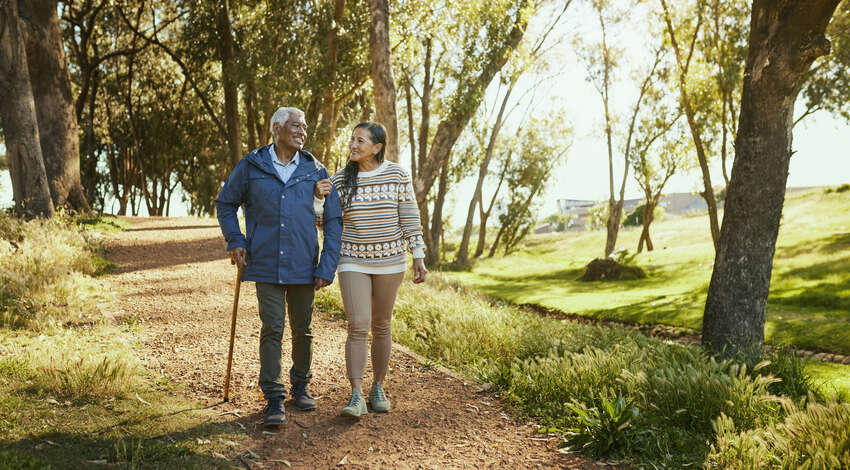
Many people, as they pass through their 50s and 60s and beyond, begin to notice a decline in their fitness level and wonder if continued decline is inevitable. What would you tell them?
I think probably the most important thing for us to do as we're growing older is to question our assumptions around what that means — in our bodies and in general. Once I started working as a personal trainer, I became quite interested in ageism and anti-ageism, and one of the things that became abundantly clear to me is that there are many inaccurate and very harmful assumptions that we have around aging — and we start internalizing them very early. So, for example, I've had clients in their 30s who start talking about how maybe they should be more careful in how they move, or that their aches and pains are just due to the process of aging, when in the vast majority of cases, those aches are far less a product of the aging process than they are a product of sedentary culture and losing the habit of movement.
So you feel behavioral changes are the culprit rather than advancing years per se?
Yes, it is very much a “use it or lose it” game, because our bodies are, in fact, incredibly efficient. If we don't tell them that they need to preserve certain capacities, they simply won't, because we are glucose-preserving organisms. If I do not deploy the strength or ability to, let’s say, get down to and up from the floor, then I'm not telling my body that I might want to do those things in the future, and — because my body isn't a mind reader — I am simply going to lose that capacity. We tend to ascribe the loss of those capacities to aging because that's very much a part of our culture. But it's simply not true in the vast majority of cases.
You gave a Road Scholar Age Well lecture recently where you talked about this issue, and you had a surprising prescription for addressing it: curiosity.
What I suggest is that when people come up with these ideas around “I'm too old to do this,” or “This is too hard,” or “My body can't do that anymore,” that instead of simply accepting those assumptions untested, they find ways to be curious about whether or not the assumptions are true — because in many cases they simply are not.
I think most of us accept that movement is good for us in all sorts of ways. What matters more than anything is to just make a start, just start and see where that takes you. When we look at the reasons why people have gym memberships that they don't use, or basements full of exercise equipment that they don't use, it’s really only for a couple of reasons — either they don't start at all, or they don't continue.
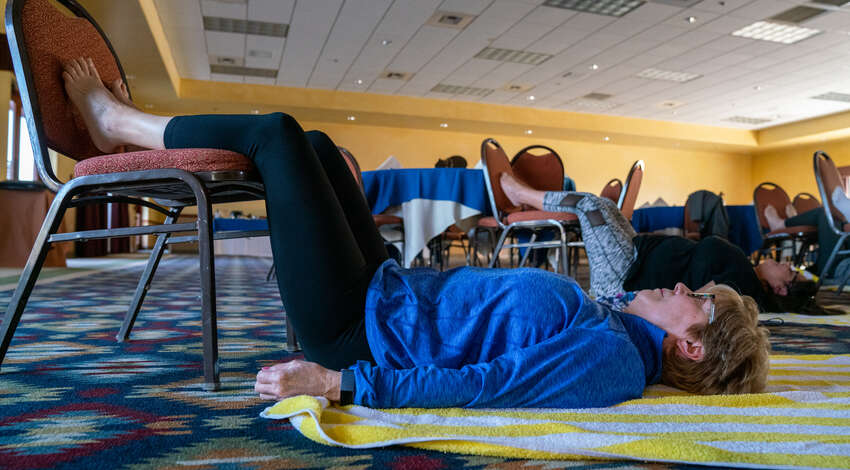
So, how does one get started? If I begin by taking an inventory of all of the ways that I'm not happy with my body, all the things that I wish were different, that's a disincentive, because I'm going to come up with a whole bunch of things. And it's going to be, “This is way too much; it's overwhelming.”
I'm interested in removing barriers like that. What I do with my clients who are deconditioned — who do not have a movement practice — is to explore movement. I give them a whole bunch of different types of movement, and I ask them to identify what they like — what their body is telling them it likes.
This is doing a couple of things. It's getting at the idea we inherit from our culture that exercise has to be hard, which it really doesn’t. There are so many ways to move in the world. Why would I have to do this, that or the other thing that I really don't like when there are so many other options available?
Yes, there are certain things that are better for us and more important for us than others as we grow older. But the most important thing of all is to build the habit of movement, and the way to do that is by starting with what you can do rather than what you can't, celebrating what you can and finding things that you can enjoy. Because, once you begin to enjoy movement and experience some of the changes that can happen very, very quickly, then you might actually be curious about some of the other things that you’re not particularly drawn to initially.
Often with my clients, we get to the point where we've identified a number of different things that they like to do. So now we're building some variety in as well.
So you get started by finding one thing that you like to do, and then finding another thing that's different. And another thing that's a little bit different than that, maybe one that involves the body in different ways. And you just keep building that vocabulary.
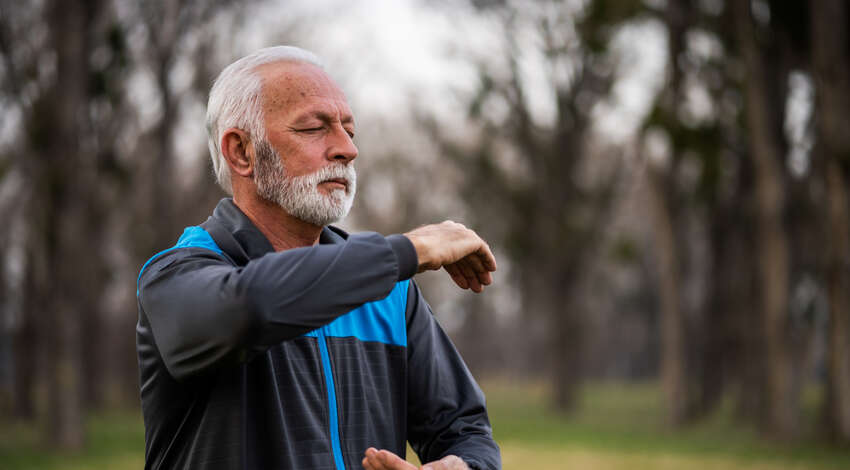
What about the second challenge — keeping at it and not quitting? Sometimes people will fall off of the path that they're on because they just find things tedious or there isn't enough reward built in to what they're doing. How do you address that?
One of the main reasons people don't continue is boredom. Boredom I take as really great information. It means that I am not doing enough to challenge myself. To me, a good part of building a sustainable movement practice is noticing, and boredom is just a great piece of information. If I pay attention to my boredom, I'm going to do something about it. I'm going to ask myself why I'm bored. But of course, this gets back to the false notion that we should only be moving in ways that somebody tells us to move. And we're not that interested in creating something for ourselves or even adjusting for ourselves. So, another thing that I teach my clients is how to make things easier, how to make things harder, how to make them more comfortable, and also how to make them more intriguing or more interesting — in other words, how to add complexity.
But sometimes the whole thing is just too boring. You've outgrown it. Well, isn't that a great thing? So now go and find something else that intrigues you, something else where you feel “Yeah, this is good for my body. This is good for me. This is good for my soul.”
Another reason why people fail to continue is they don't see the results that they're hoping for. It’s important to understand that there is no such thing as a global movement practice that is going to give you all the capacity you want. It simply doesn't exist.
All movement practices have really great strengths, but they also have gaps, so it can be very frustrating for people to be practicing something that they think is going to give them a certain result, but because of the gaps within that particular system, or because the overall intention of the system doesn’t really match their goals, what was hoped for is not materializing.
To give an obvious example, one of the most commonly prescribed forms of exercise is walking. Walking is great, it's absolutely great. But how do I see most people walk when they've been prescribed walking? They go out with their friends, and it's a leisurely stroll, and they can talk and laugh. And this is all great for the soul. But what are they doing? They are simply practicing what their bodies can already do. If I'm walking at a pace where I can maintain a normal conversation without any difficulty, I'm not being challenged in my strength or my endurance. I am simply maintaining what I already have, rather than stimulating my body to adapt. Our bodies will only adapt in the ways that we stimulate them to adapt.
There's something in my world called progressive overload, especially insofar as strength training is concerned, and what it means is, once it's easy for me to lift something of a particular weight, and I can do it for a whole bunch of repetitions, if I expect to get any stronger, I have to start lifting more weight. If somebody is picking up, for example, a 15-pound weight, most people typically carry groceries that are that heavy, and they do it fairly commonly. So this isn’t really moving the needle. You should be picking up a heavier weight that challenges you so that you can only pick it up for maybe 12 to 15 times, and be really close to your limit by the time you get to the last rep. That's where you want to be with strength training.
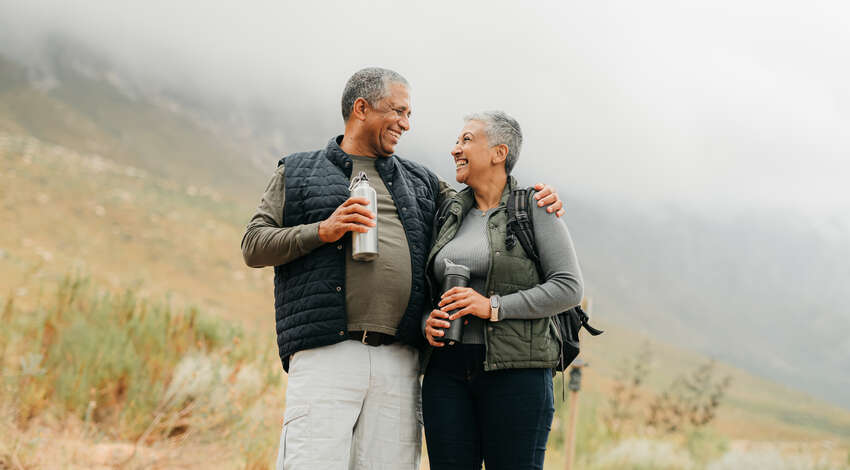
Would you say that’s the same for cardio training?
The basic idea is still the same, yes — that if I want to increase my cardio capacity, I have to be getting myself into a range where I can't maintain a perfectly normal conversation. I also don't really want to be gasping. Getting back to the idea of walking, again, it’s a fantastic exercise, and even when it is not practiced in a range that is going to provoke physical change, it's still a really great thing emotionally.
But this is why you need to be clear on why you’re doing the activity that you’re doing, so that you’re going to meet those goals. If I’m walking, but my goal is that I want to increase my ability to get something heavy down from the highest cabinet in my home, or pick something up from the ground or get to the ground and back up again, walking isn't going to help me with any of those things, not one of them.
So I think this is a way we can begin to poke at one of the disincentives to continuing, which is not getting the results we want. We should match what we do, movement-wise, to what we actually want to be able to do.
I know a concern with older people in particular is maintaining confidence and ease of movement as they age.
Well, I would think about these things in terms of power and balance. So, what is power? Power is the ability to express strength more quickly. For example, I might be able to do something strong with my legs, but I also want to be able to move quickly with my legs, to get out of the way, or jump, or whatever. Power has to do largely with our ability to navigate the world at speed, because life doesn't come to us slowly. It comes to us at speed, and we learn to deal with speed and momentum by practicing speed and momentum.
A lot of slowness that we begin to experience as we grow older is not necessarily a function of growing older. It's because we never move quickly. We never move quickly from side to side or jump out of the way of things. So learning how to express things more quickly is also very important to us.
Think about the simple act of catching yourself in a fall. That involves being able to use all the skills that are associated with being able to move at speed. So if I'm falling, I need to be able to react quickly. If I'm going to catch myself, I need to be able to move my feet pretty quickly to get them back under me. If I never practice that, then the chance of me being able to do it in a moment when life has met me in an unpredictable way is significantly reduced.
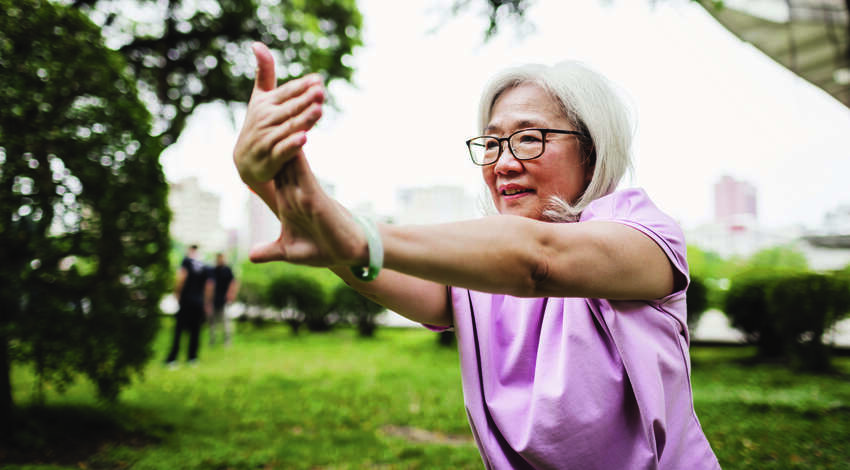
What would be practical ways to work on those power issues? Would it be racket sports, sparring or similar things that are focused on reaction times?
That's very interesting. I think sports are fantastic. But something that can really hurt us emotionally is moving back into sport and getting injured very quickly, because we think that because we have a body, and we see other people doing it, that we should be able to do it as well, and that we should be able to do it right away, and we get caught up in the competitiveness of it and wanting to be able to do the thing rather than focusing on building the capacity and the skill within our bodies. So I would certainly suggest that by all means getting involved in whatever sport gets you excited is great, but it might not be the right thing to do right away unless you are pretty sure that you have prepared your body to manage some of what you are about to do. Yes, the sorts of skills that would be associated with boxing could be beneficial, but why pursue them through the sport? Maybe let's practice those independently, or let's practice moving quickly from side to side in in a class where that's the focus and you’re learning how to stabilize the hip, and learning how to align the hip, knee and ankle and not put shearing pressure on the joints. So preparing our joints and muscles for the activity of sport is just as important as the sport itself. I would encourage everybody to take up something that they enjoy, but certainly to go easy at first, and also ask themselves, what can I do to prepare myself a little bit better to do this?
Would that hold true for balance, as well — practicing and learning techniques to improve it?
Balance is interesting because it can respond very quickly to some care and attention. The question again is, wat kind of balance challenges are you likely to be encountering in the world?
There are movement disciplines where balance practice, like standing on one leg, is used as a way to find stillness and drop into yourself and become aware of what's going on inside. That is great for self-awareness, but it's not a great way to practice balance if I want to improve my ability to respond to balance challenges in the world. If I expect to be able to catch my balance when I trip, or maybe, you know, I don't anticipate a curb, or I think that a stair is a little bit lower than it really is, having balance practice that is only standing still on one leg with my eyes closed won't help me hardly at all. So again, it's this idea of matching your movement practice to how you want to be able to move through the world.
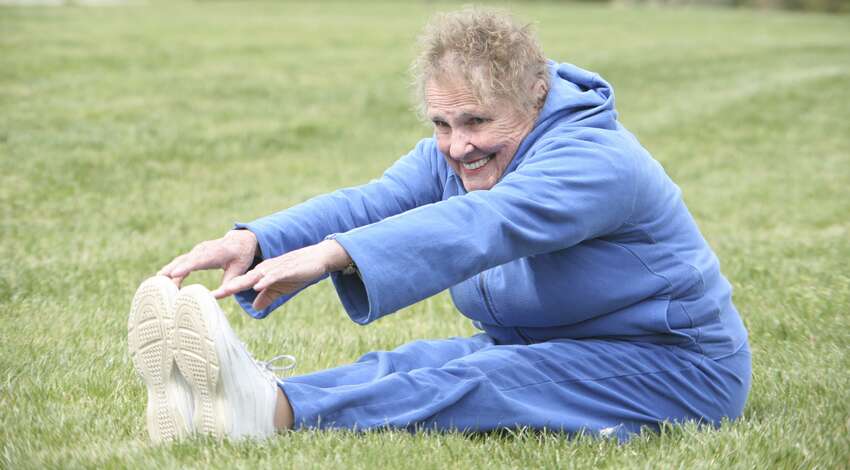
Road Scholars often travel to places where they’re navigating cobblestone streets, or stairs without railings, or uneven terrain. This sort of practice seems like it could be really useful in those situations.
I actually teach classes for that specific scenario — for people who are going to be traveling and want to prepare their bodies to be able to manage with greater ease and comfort the challenges they're likely to encounter. I had a client just recently who wanted to visit her very active daughter and go on a hike with her, so we worked on preparing her. And she said the experience was magical — that it was the first time in years that she could be fully present when she was traveling.
Building this capacity, building this awareness, building this confidence through practicing the sorts of things that we might encounter — it really matters.
This conversation has been about putting yourself on an upward trajectory, whether that’s in terms or strength, or cardio, or power. How long can we continue on that trajectory as we age?
I go back to one of the very first things that I talked about: Let's challenge our assumptions, shall we? So I, for example, was never a gym rat, I was never an athlete but here I am in my 60s, and I am stronger than I have been in my life. I have more physical capacity than I have ever had. It’s going to vary from individual to individual, but remember that our bodies want to support us — they’ll do everything they can to do what we ask them to do, because they interpret it as a matter of survival. And so, even though it’s harder for us to build strength as we grow older, even though we start losing muscle mass, and there are changes in the composition of our muscles and in bone density and things like that, our bodies will nevertheless respond to stimulus.
It is very important that we keep asking ourselves, “What can I do?” rather than just assuming that because I'm a certain age I can't. Be curious! Can I go a little faster? Can I lift a little more? What would happen if I gave myself some time? Think about how you could find an entry place into movement and work on it rather than just surrendering to this binary can/can't mentality. Healthy curiosity is what drives your Road Scholar participants to explore the world; having that same curiosity about themselves and their physical abilities can be equally rewarding.
